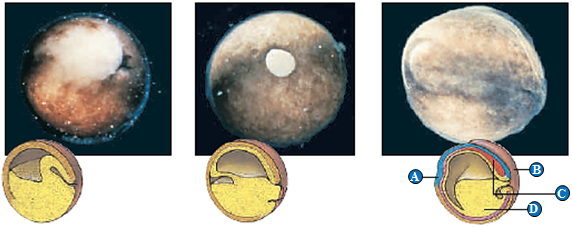Cells of the pancreas will incorporate radioactively labeled amino acids into proteins. This "tagging" of newly synthesized proteins enables a researcher to track the location of these proteins in a cell. In this case, we are tracking an enzyme that is eventually secreted by pancreatic cells. Which of the following is the most likely pathway for movement of this protein in the cell?
a. ER Golgi nucleus
b. Golgi ER lysosome
c. nucleus ER Golgi
d. ER Golgi vesicles that fuse with plasma membrane
e. ER lysosomes vesicles that fuse with plasma membrane
d. ER Golgi vesicles that fuse with plasma membrane
You might also like to view...
At the pH of most bodily fluids, which functional group will lose a proton and which functional group will accept a proton?
A. sulfhydryl; carbonyl B. Hydroxyl; amino C. amino; carboxyl D. carboxyl; amino E. carbonyl; Hydroxyl Clarify Question · What is the key concept addressed by the question? · What type of thinking is required? · What key words does the question contain and what do they mean? Gather Content · What do you know about functional groups? How does it relate to the question? Consider Possibilities · What other information is related to the question? Which information is most useful? Choose Answer · Given what you now know, what information and/or problem solving approach is most likely to produce the correct answer? Reflect on Process · Did your problem-solving process lead you to the correct answer? If not, where did the process break down or lead you astray? How can you revise your approach to produce a more desirable result?
Which one of the following is a pyrimidine found in DNA?
A. adenine B. guanine C. uracil D. thymine E. None of these choices is pyrimidines found in DNA.
The processing of information and response in a manner that suggests thinking in the animal is called
A. endogenous behavior. B. environmental induced behavior. C. instinctive behavior. D. associative behavior. E. cognitive behavior.

A. ectoderm B. endoderm C. mesoderm D. neural plate E. yolk